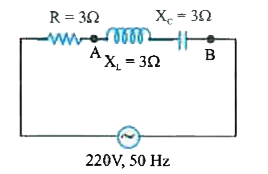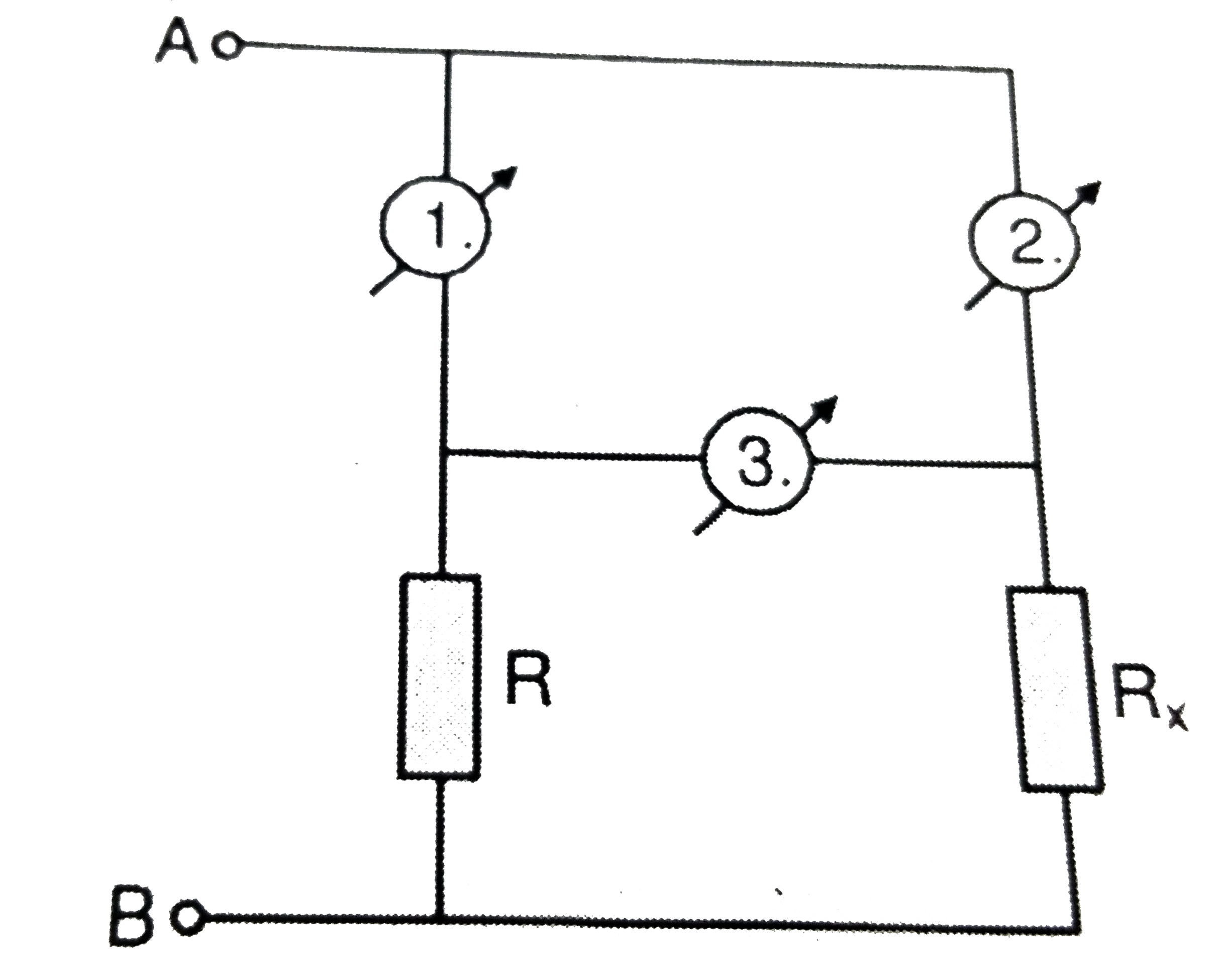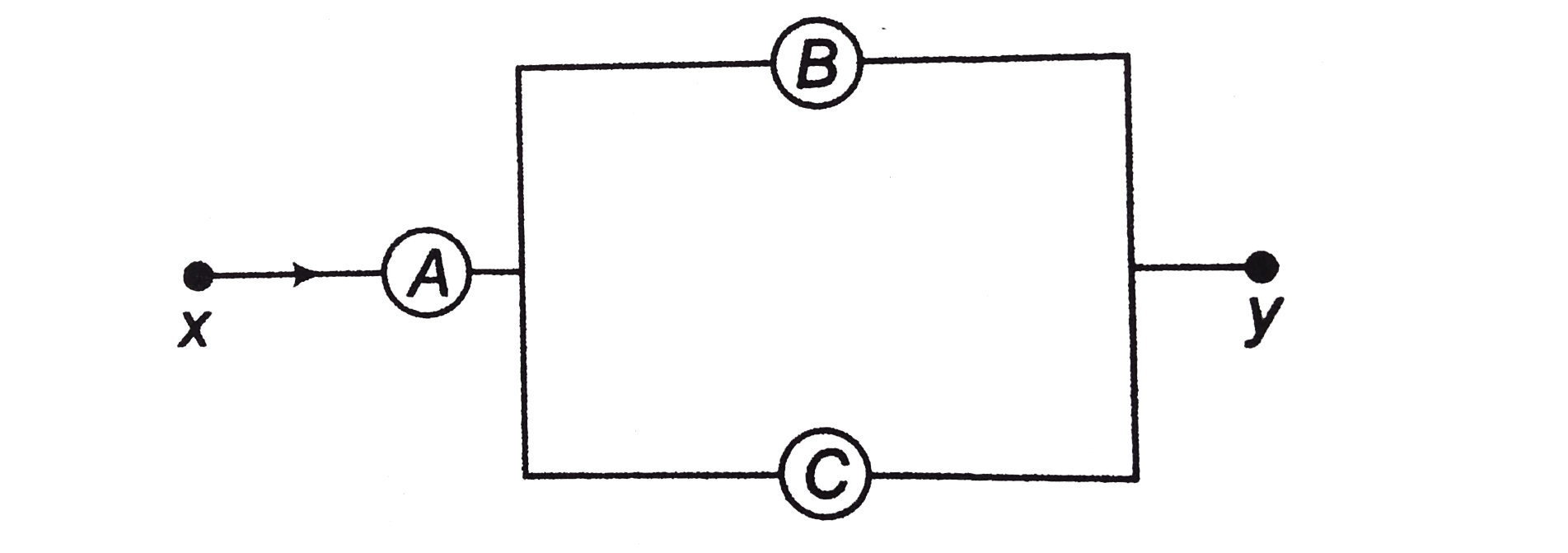Three ammeters A,B, and C of resistances RA,Rb and RC respectively are joined as shown. When some potential difference is appllied across the terminals T1 and T2 their readings are IA,IBandIC respectively Then,

IA=IB
IARA+IBRB=ICRC
IAIC=RCRA
IBIC=RCRA+RB
The correct Answer is:A, B, D
a. In series, current is same.
∴IA=IB
b. VA+VB=VC
∴IR_A+IBRB=ICRC
d. In parallel, current distributes in inverse ratio of resistance
∴IBIC=IAIC=RCRA+RB
Topper's Solved these Questions
- CURRENT ELECTRICITYBOOK - DC PANDEYCHAPTER - CURRENT ELECTRICITYEXERCISE - Level 2 Comprehension Example Type
2 Videos
- CURRENT ELECTRICITYBOOK - DC PANDEYCHAPTER - CURRENT ELECTRICITYEXERCISE - Level 2 Subjective
13 Videos
- CURRENT ELECTRICITYBOOK - DC PANDEYCHAPTER - CURRENT ELECTRICITYEXERCISE - Level 2 Single Correct
26 Videos
- COMMUNICATION SYSTEMBOOK - DC PANDEYCHAPTER - COMMUNICATION SYSTEMEXERCISE - Subjective
11 Videos
- ELECTROMAGNETIC INDUCTIONBOOK - DC PANDEYCHAPTER - ELECTROMAGNETIC INDUCTIONEXERCISE - Medical entrances gallery
25 Videos
Similar Questions
Three voltmeters A, B and C having resistances R, 1.5 R and 3 R respectively are used in a circuit as shown. When a potential difference is applied between X and Y, the readings of the voltmeters are V1,V2andV3respectively. Then :

View SolutionIn serial L-C-R circuit as shown in figure. The potential difference across A & B is

View Solution
Knowledge Check
Three ammeters 1, 2, and 3 of resistances R1.R2andR3 respectively are joined as shown. When some potential difference is applied across the terminals P and Q, their readings are I1,I2andI3, respectively. Then
 AI1=I2BI1R1+I2R2=I3R3CI1I2=R3R1DI2I3=R3R1+R2
AI1=I2BI1R1+I2R2=I3R3CI1I2=R3R1DI2I3=R3R1+R2A,B and C are voltmeters of resistance R, 1.5 R and 3R respectively as shown in the figure. When some potential difference is applied between X and Y, the voltmeter reading are VA,VBandVC respectively.
AVA=AB≠VCBVA≠VB≠VCCVA=AB=VCDVA≠VB=VCThree voltmeters A, B and C having resistances R, 1.5 R and 3 R respectively are used in a circuit as shown. When a potential difference is applied between X and Y, the readings of the voltmeters are V1,V2andV3respectively. Then :
 AV1=V2=V3BV1<V2=V3CV1>V2>V3DV1>V2=V3
AV1=V2=V3BV1<V2=V3CV1>V2>V3DV1>V2=V3
Three concentric spherical conductors A, B and C of radii R, 2R and 4R respectively. A and C is shorted and B is uniformly charged
Potential at A is

View SolutionThree concentric spherical conductors A, B and C of radii R, 2R and 4R respectively. A and C is shorted and B is uniformly charged .
Potential at B is

View SolutionIn the circit shown the three ammeters (marked as 1, 2, 3) are indentical, each have a resistance R0=2Ω. Between points A and B three is a constant potential difference of 19V. The first and second ammeter read I1=2.5 A and I2=1.5Arespectively.
(a) What is the reading of third ammeter ?
(b) Calculate value of resistance R.
( c) Investigate what happens to current I3 if the value of Rx is changed. Show approximately graphical variation of I3vsRx.
Note : Reading of ammeter implies current through brance of ammeter.

View SolutionA,B and C are voltmeters of resistances R,1.5R and 3R respectively. When some potential difference is applied between x and y the voltmeter readings are VA,V_BandV_C, then

View SolutionIn the series L-C-R circuit , the voltmeter and ammeter readings are respectively

View Solution
